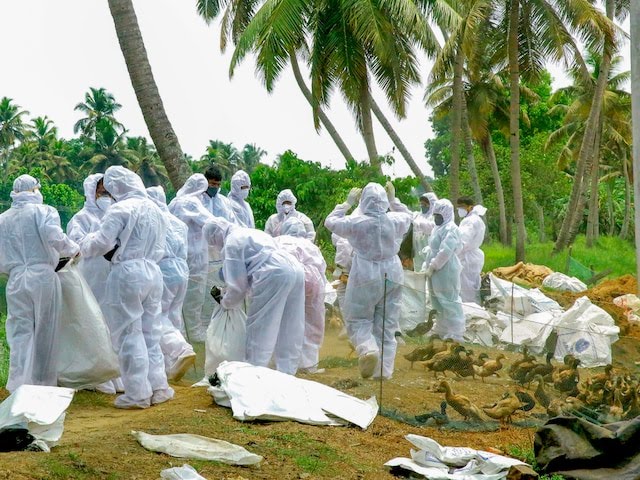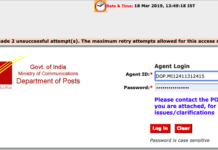The recent Kerala Bird Flu Outbreak has sent shockwaves through communities in the state, prompting urgent responses from authorities. This outbreak has necessitated a multifaceted approach, combining scientific expertise, government intervention, and community engagement to mitigate the spread of the virus and safeguard public health.
Table of Contents
Understanding the Outbreak
The confirmation of bird flu in ducks in specific regions of Kerala, as identified through rigorous testing protocols, serves as a stark reminder of the ever-present threat posed by infectious diseases. The rapid dissemination of information by health authorities and media outlets has played a crucial role in raising awareness and facilitating a coordinated response.
Indonesian Volcanic Eruption: Shocking Revelations Unveiled!
Government Response and Policy Initiatives
The proactive measures taken by the Kerala government, under the guidance of State Health Minister Veena George, exemplify a robust public health response. The invocation of the Kerala Public Health Act of 2023 and the deployment of panchayat-level committees underscore the government’s commitment to containing the outbreak and protecting vulnerable communities.
Operational Strategies
The execution of bird culling operations by the Animal Husbandry Department (AHD) represents a critical component of containment efforts. The strategic targeting of affected areas, coupled with comprehensive surveillance measures, enables authorities to swiftly identify and eliminate potential sources of transmission.
Interstate Collaboration
The collaboration between Kerala and neighboring Tamil Nadu in bolstering border surveillance highlights the importance of regional cooperation in combating infectious diseases. By sharing resources, expertise, and best practices, both states can enhance their capacity to detect and respond to outbreaks effectively.
Scientific Insights into H5N1
A deeper understanding of the biological characteristics and transmission dynamics of the H5N1 virus is essential for devising targeted interventions. Scientific research conducted by epidemiologists, virologists, and public health experts provides valuable insights into the origins, evolution, and potential impact of the virus on human and animal populations.
Clinical Management and Treatment Protocols
The availability of antiviral medications such as oseltamivir (Tamiflu) is instrumental in mitigating the severity of symptoms and reducing the risk of complications in infected individuals. However, the efficacy of these treatments may vary depending on factors such as viral strain and patient susceptibility.
Community Engagement and Risk Communication
Effective risk communication strategies are essential for promoting public awareness, dispelling misinformation, and fostering community resilience. By empowering individuals with accurate information and practical guidance on preventive measures, authorities can mobilize collective action and minimize the spread of fear and panic.
Economic and Social Implications
The bird flu outbreak in Kerala has significant socio-economic ramifications, particularly for communities reliant on poultry farming and related industries. Measures to support affected farmers, mitigate financial losses, and ensure food security are paramount in mitigating the broader impact of the crisis.
Long-term Preparedness and Resilience
While the immediate focus remains on containing the current outbreak, it is imperative to adopt a long-term perspective on pandemic preparedness and resilience-building. Investments in healthcare infrastructure, research and development, and community-based surveillance systems are essential for mitigating future threats and safeguarding public health.
Conclusion
The Kerala Bird Flu Outbreak serves as a sobering reminder of the persistent threat posed by infectious diseases and the critical importance of proactive response measures. By leveraging scientific expertise, government leadership, and community engagement, we can effectively mitigate the impact of outbreaks, protect vulnerable populations, and build a more resilient healthcare ecosystem for the future.
PSEB 10th Result 2024: Unveiling the Triumphs and Trials of Punjab’s Students
FAQ’s
1. What is bird flu, and how does it spread?
Bird flu, or avian influenza, is a viral infection primarily affecting birds but can occasionally infect humans and other mammals. It spreads through contact with infected birds or their droppings, saliva, or respiratory secretions.
2. What are the symptoms of bird flu in humans?
Symptoms of bird flu in humans can range from mild respiratory symptoms to severe illness and even death. Common symptoms include fever, cough, sore throat, muscle aches, and difficulty breathing.
3. Is bird flu contagious between humans?
While bird flu primarily spreads from birds to humans, limited cases of human-to-human transmission have been reported, usually in close contact situations with infected individuals. However, sustained human-to-human transmission is rare.
4. How is bird flu diagnosed in humans?
Diagnosis of bird flu in humans involves laboratory testing of respiratory specimens, such as throat swabs or nasal secretions. Healthcare providers may also consider a patient’s symptoms, travel history, and exposure to birds.
5. What is the treatment for bird flu in humans?
Treatment for bird flu typically involves antiviral medications, such as oseltamivir (Tamiflu), to reduce the severity and duration of symptoms. Supportive care, including rest, hydration, and monitoring, is also important.
6. What precautions should I take to prevent bird flu?
To prevent bird flu, avoid contact with sick or dead birds, practice good hygiene, thoroughly cook poultry and eggs before consuming, and follow any advisories or restrictions issued by health authorities.
7. Are there any vaccines available for bird flu?
While vaccines for bird flu exist, they are primarily used in poultry populations to prevent outbreaks and are not widely available for human use. Research continues on developing effective vaccines for human protection.
8. Is it safe to eat poultry products during a bird flu outbreak?
Yes, it is safe to consume properly cooked poultry and eggs during a bird flu outbreak. Cooking poultry products to an internal temperature of 165°F (74°C) kills the virus and eliminates the risk of transmission.
9. How can I protect my poultry from bird flu?
Protecting poultry from bird flu involves implementing biosecurity measures on farms, such as restricting access to wild birds, maintaining clean environments, and monitoring for signs of illness in poultry.
10. What should I do if I suspect bird flu in my area?
If you suspect bird flu in your area, report it to local health authorities or agricultural agencies immediately. Follow any guidelines or recommendations provided and avoid handling sick or dead birds without proper protection.














